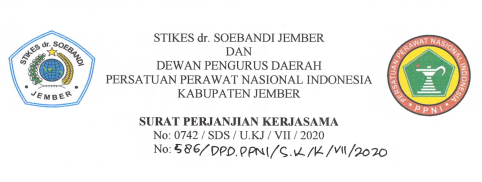The Differences of Learning with Demonstration Methods on the Ability of Mothers in the Care of Normal Newborns
DOI:
https://doi.org/10.36858/jkds.v8i2.182Keywords:
Mother's Ability, Demonstration Method, Normal Newborn babies Care.Abstract
Normal newborn care is an action that must be done immediately by labor assistants and parents who aim to prevent complications as early as possible because newborns tend to be sensitive to changes in the surrounding environment including air, temperature, etc., including exposure to various diseases. Besides the nutritional needs of infants also differ in terms of the amount and frequency of administration. The population projection according to the National Development Planning Agency in 2010-2035, Indonesia's population in 2010 reached 238.52 million, with a birth rate of 5 million, and a death rate of 1.52 people. According to the Indonesian Health Profile (2017), exclusive breastfeeding coverage is 54.0%, while for East Java, exclusive breastfeeding coverage is 48.1% and in the city of Jember 58%, for umbilical cord care that is not given anything at 33.6 %, 63.3% were treated with alcohol or betadine, 0.7% were administered with sowing drugs, and 2.3% were given traditional medicine. The process of starting breastfeeding nationally is done at the age of 0-24 months, the initiation of early breastfeeding in less than one hour is 34.5%, which starts 1-6 hours 35.2%, starts 7-24 hours 3.7%. While for East Java, early breastfeeding initiation which started in less than one hour was 33.3%, 1-6 hours started in 33.5%, started in 7-23 hours was 3.3%, which started in 24-47 hours are 15.3% and those that start more than 48 hours are 14.7%. The purpose of this study was to determine the ability of mother to care for normal newborn babies before and after demonstrations learning methods were given. Analytic observational research design, with one group pre test-post test approach, with a population of mothers who have newborns until the age of 28 days, a total of 20 people with acidental sampling techniques, measuring instruments used questionnaires and checklist.The results showed of the study found that there were significant difference between the results of the first and second ability measurements in the learning group with the demonstration method, with a p-value of 0,000, 95% Cl -7,904 - -2,696. This demonstation learning methods is very effective to improve the ability of mothers to care for their babies, all mothers both who already have a baby are important to prepare the din to prepare the ability to care for a new baby well, so that with the ability to care for it, will increase bounding with the baby.





